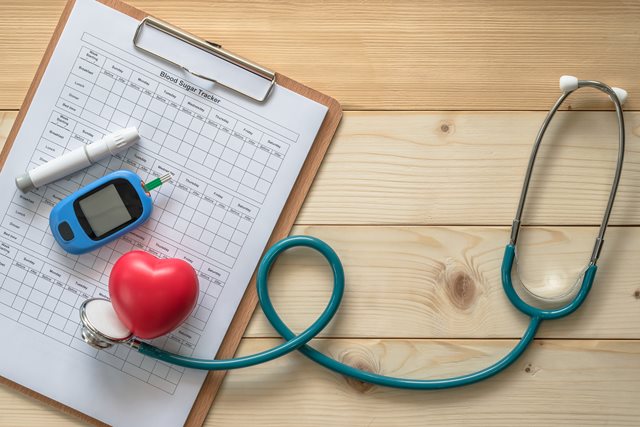Sponsored content provided by Dexcom
For people like Rick, who live with type 2 diabetes, finding ways to feel healthier, active, and in control of their condition is essential to living a balanced, fulfilling life. Part of maintaining this balance is staying informed about glucose levels and how they fluctuate depending on diet, physical activity, and medication.
Glucose monitoring is a practice that can help people living with type 2 diabetes (T2D) feel empowered to make choices that positively impact their health and well-being.
By making glucose monitoring part of your daily routine, you can see the impact of your lifestyle choices and better manage your diabetes. Tracking progress and celebrating small wins is also important for staying motivated and engaged in your diabetes self-care.
There are many different ways to monitor glucose levels, such as using a continuous glucose monitoring (CGM) or a blood glucose monitoring (BGM) device, and it's essential to find the tool that works best for you. Talk to your doctor about glucose monitoring for T2D to learn more.
Why is glucose monitoring important?
Glucose is one of the most important nutrients your body needs to function properly. It's essential for energy production, cell growth and repair, and many other vital bodily functions.1 However, when glucose levels are too high or too low, it can lead to serious health complications.1 That's why glucose monitoring is an integral part of a good diabetes management plan.
Glucose monitoring can support a person with T2D in learning how their body responds to different foods and physical activities. It can also show the impact of medication on glucose levels.
Understanding your glucose levels is necessary for several reasons:
- It can help you make more informed decisions about future diet, physical activity, and medication choices.
- It can help you avoid the serious health complications that can result from uncontrolled blood sugar.
- It can help you learn about your body and review how different foods and physical activities may affect your glucose levels going forward.
How to use technology for glucose monitoring
These days, there are many different glucose monitoring devices on the market. Some may require a finger prick and blood sample to get a reading. Others are more sophisticated and can be worn directly on the body.
Continuous glucose monitoring (CGM) devices can provide real-time glucose readings up to every five minutes, throughout the day and night. This can be especially useful for people who experience hypoglycemia at night or who forget to check their levels regularly throughout the day.
CGM devices are worn on the body and send glucose readings to a receiver or smart device and show how your glucose levels fluctuate over the course of a day. Some also show how often you stay within an average range, also called time in range (TIR). Some CGM devices have alerts that can notify you if your glucose levels are getting too high or too low. Some devices also allow you to send alerts and share your glucose readings with chosen followers. Shareable features can be used to keep your family, friends, and healthcare team informed of your daily glucose levels.
You can also manually check your glucose levels throughout the day with a blood glucose monitoring (BGM) device. BGM devices require you to prick your finger with a lancet to get a blood sample for a glucose reading. The downside of BGM devices is they only give you a single reading for that point in time.
Both CGM and BGM devices are invaluable tools that can help you better manage your diabetes. Speak with your healthcare team to see if a CGM or BGM device is right for you.
No matter which type of device you use, there are some important things to keep in mind when using one:
- Try to check your glucose levels at the same time each day.
- Record your glucose levels in a logbook or on your computer.
- Note the time, date, and anything else that might affect your glucose level (e.g., the food you eat, how much physical activity you do).
- Share your glucose readings with your healthcare team or loved ones.
- Use the information from glucose monitoring to make improvements to your diabetes care plan.
Glucose monitoring for type 2 diabetes
For people living with T2D, learning how to navigate your condition can be overwhelming at the start. But, with the right technology, support system, and motivation, staying on top of your glucose levels can be manageable—and even empowering.
Glucose monitoring provides a way to see the impact of your daily choices on your glucose levels. When you check your glucose regularly, you can get a clear picture of how different foods, physical activity, and medication affect your glucose levels. Not to mention, monitoring your glucose levels helps you learn about your body and how to make decisions that keep you healthy.
If you’re living with T2D, it’s time to celebrate the small wins—the everyday choices that support you in living a healthy, happy, fulfilling life.
Learn more about Dexcom G6 and how it can be used to monitor your glucose levels today.
References:
1 U.S. National Library of Medicine. (2022, March 8). Blood sugar | blood glucose | diabetes. MedlinePlus. Retrieved March 16, 2022, from https://medlineplus.gov/bloodsugar.html
The opinions expressed in this article are those of the sponsor, and do not necessarily reflect those of Diabetes Canada.
Related Content

Recently diagnosed?
What you need to know about managing diabetes.
Read more About Recently diagnosed?
Tools and resources
Take charge of your health with tools and resources from Diabetes Canada.
Get started About Tools and resources
Webinars
Gain knowledge on numerous diabetes-related topics from the comfort of your own home.
View webinars About Webinars